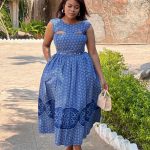Tswana Traditional Dress: A Rich Cultural Heritage

Introduction
The Tswana people, also known as the Batswana, have a rich cultural heritage that is celebrated through their traditional dress. Their attire carries deep meaning and significance, reflecting the history, traditions, and identity of the Tswana people. From vibrant colors and intricate patterns to the use of traditional fabrics, Tswana traditional dress is a true reflection of their cultural heritage.
Brief overview of Tswana culture and the importance of traditional dress
The Tswana culture is deeply rooted in traditions and values that have been passed down through generations. Traditional dress plays a crucial role in preserving and showcasing this cultural heritage. Tswana traditional attire is characterized by its colorful and elaborate designs, often adorned with beading and embroidery. Each garment tells a story and represents a specific occasion or stage in life, such as weddings, funerals, or coming-of-age ceremonies.
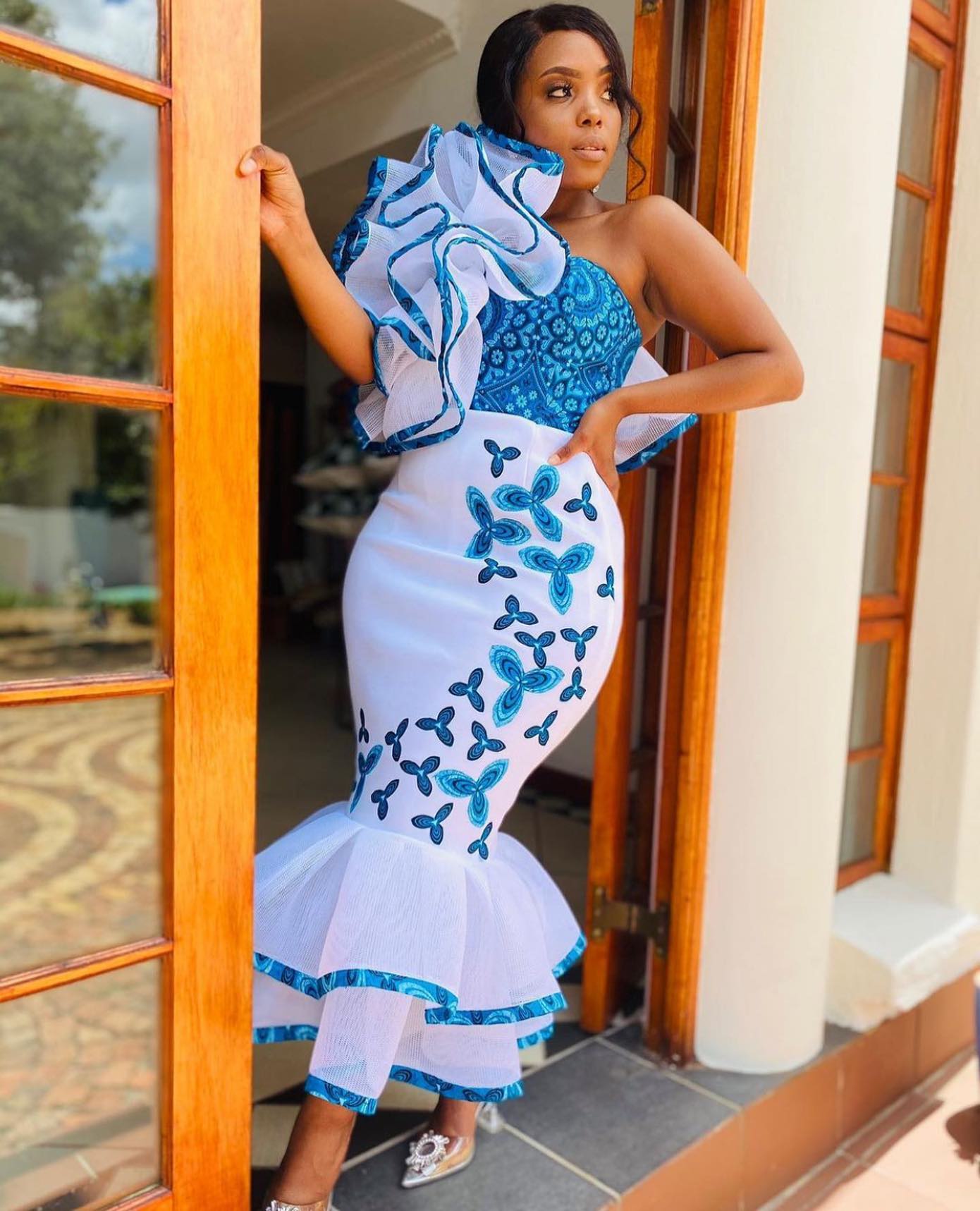

Tswana traditional dress is not only a way of honoring and preserving the heritage of the Tswana people, but it also serves as a form of cultural expression and identity. Wearing traditional attire is a source of pride and a way to celebrate their unique customs and traditions. Today, Tswana traditional dress is showcased during special events, cultural festivals, and proudly worn by Tswana individuals across the country.
The Tswana traditional dress is a living symbol of their rich cultural heritage, connecting the past with the present and ensuring that their traditions are passed on to future generations. It serves as a testament to the resilience, creativity, and sense of identity of the Tswana people, making it an integral part of their culture that continues to be cherished and celebrated.
Tswana Traditional Dress: A Living Tradition
Traditional dress as a reflection of Tswana identity and heritage
The Tswana people of Southern Africa are proud of their rich cultural heritage, and one of the ways they express their identity is through traditional dress. Tswana traditional attire is not just clothing; it is a representation of their history, customs, and values. The intricate designs and styles worn by the Tswana people tell a story about their lineage and cultural significance. By embracing and wearing their traditional dress, Tswana individuals honor their ancestors and keep their heritage alive.
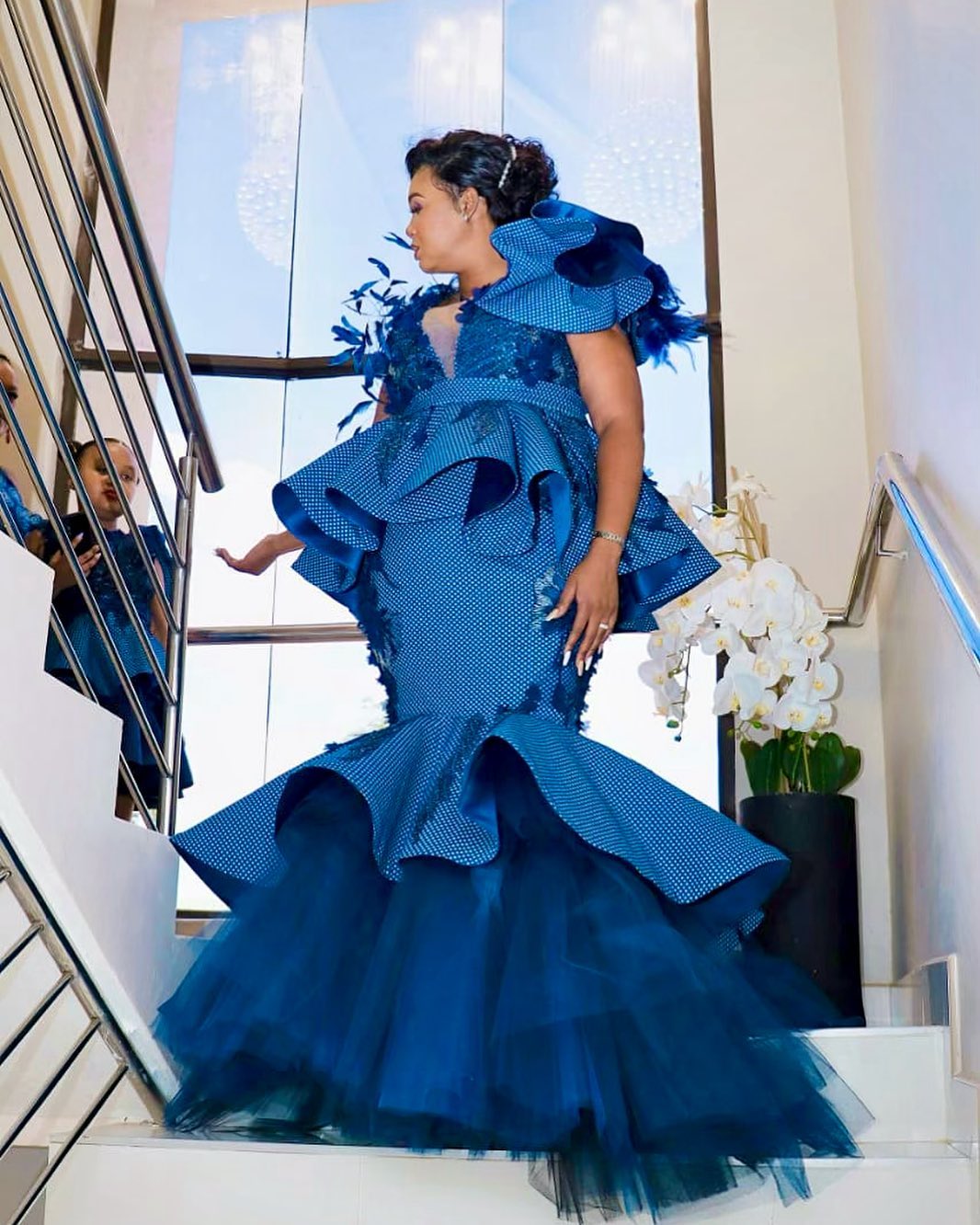
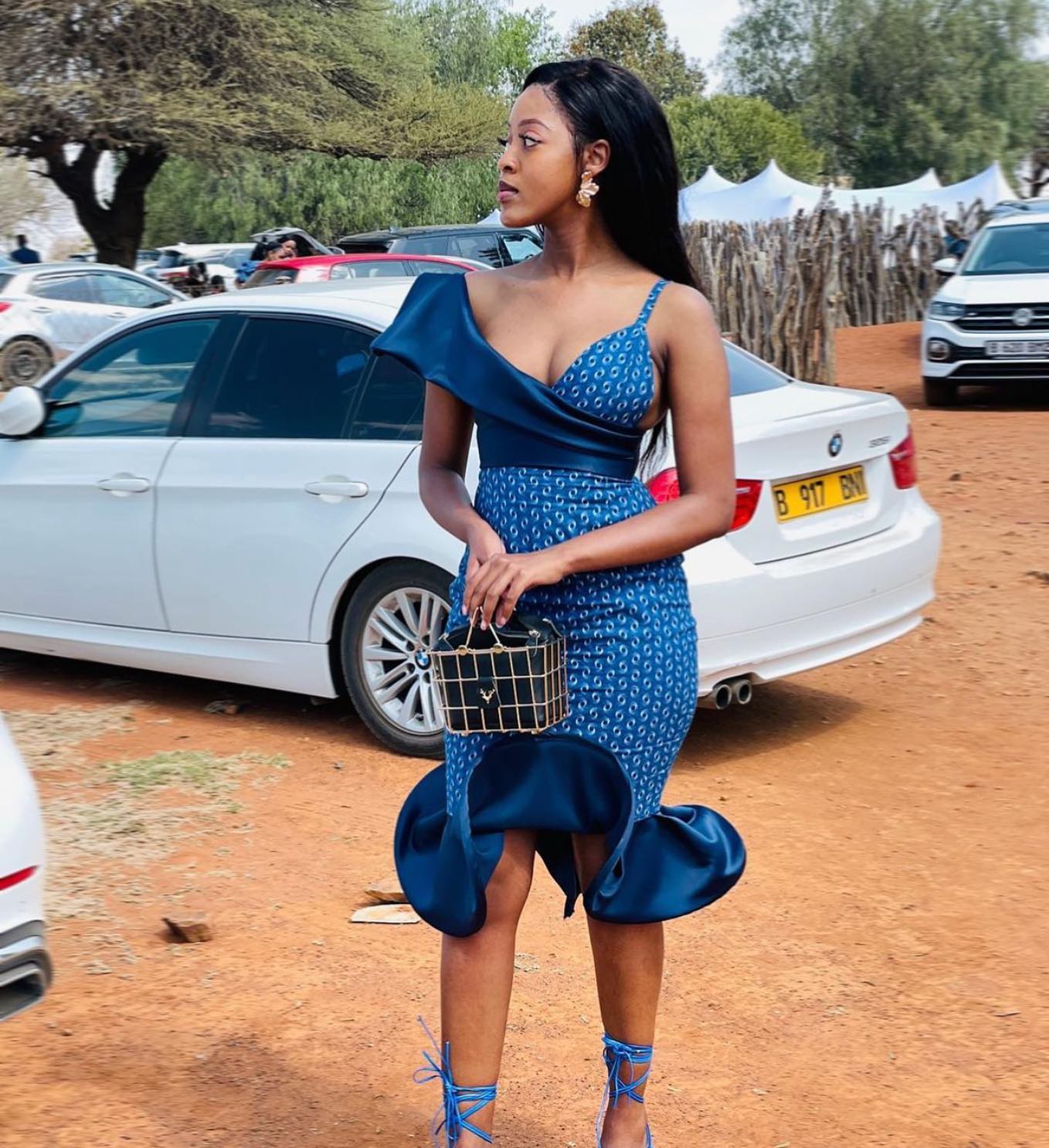
The significance of colors, patterns, and materials in Tswana attire
Colors, patterns, and materials used in Tswana traditional dress hold deep cultural meanings. Each color represents a specific aspect of Tswana life and traditions. For example, red symbolizes bravery and strength, while blue represents spirituality and healing. Patterns are intricately woven into the fabric and often depict symbols and motifs that hold cultural significance. Additionally, the choice of materials, such as animal skin or traditional fabric, connects people to their past and the natural resources of their land.
Wearing Tswana traditional dress is not just about fashion; it is a way of preserving an ancient cultural heritage. It is a statement of pride, a celebration of identity, and a connection to one’s roots. The Tswana people understand the importance of passing down these traditions to future generations, ensuring that their rich cultural heritage continues to thrive.


Traditional Tswana Clothing for Men
The Tswana people of Botswana have a rich cultural heritage, and their traditional dress is an integral part of their identity. Let’s explore the different garments worn by Tswana men and the traditional accessories and embellishments that add beauty and meaning to their attire.
Exploring the different garments worn by Tswana men
- Letlhafula: This is a sleeveless leather cape that is worn over the shoulders. It is adorned with colorful beads and represents the social standing and achievements of the wearer.
- Mokorotlo: The mokorotlo is a unique hat made from straw or reeds. Its distinct conical shape is inspired by the traditional Tswana dwelling, the rondavel. It is worn both as a functional headgear to protect from the sun and as a symbol of cultural identity.
- Seswang: The seswang is a loincloth made from animal hide or fabric. It is wrapped around the waist and legs, providing comfort and freedom of movement. The style and colors of the seswang can vary, reflecting personal and regional preferences.


Traditional accessories and embellishments
- Mosese: These are decorative leather panels that are worn around the neck. They are intricately carved with traditional patterns and symbols, adding a touch of elegance to the overall attire.
- Setjeo: The setjeo is a leather belt adorned with brass or copper rings. It not only serves as a functional accessory to hold the seswang in place but also adds a touch of style and sophistication to the outfit.
The Tswana traditional dress for men is a reflection of their cultural heritage and a source of pride. It celebrates their history, craftsmanship, and artistic expression, making it a truly unique and beautiful attire.
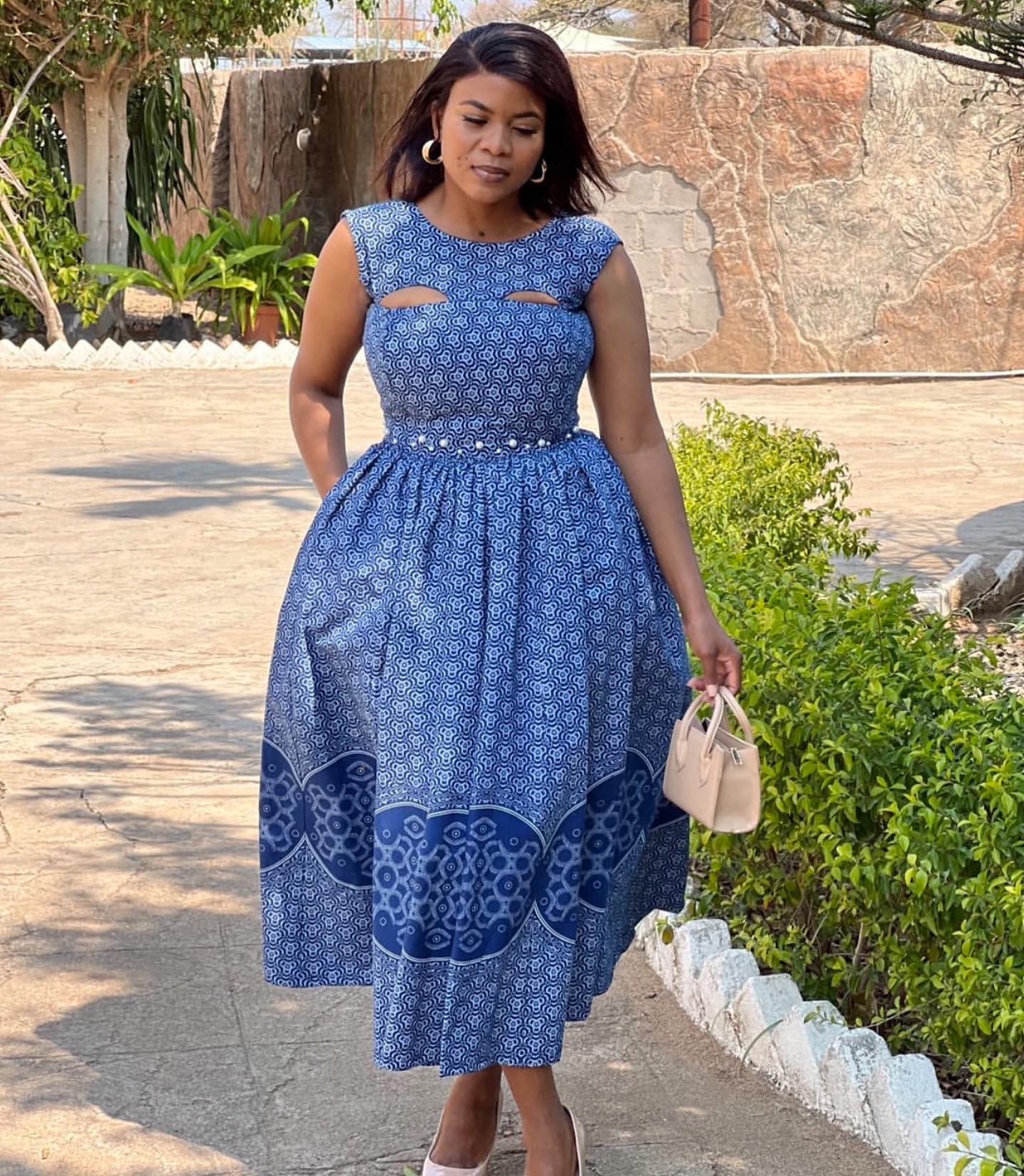

Traditional Tswana Clothing for Women
The traditional Tswana dress is more than just fabric and adornments; it is a symbol of a rich cultural heritage that has evolved over time. Tswana women take great pride in their traditional attire, which reflects their identity and sense of belonging to the Tswana community.
Traditional attire for Tswana women and its evolution over time
The traditional clothing for Tswana women is characterized by vibrant colors, intricate patterns, and unique designs. It typically consists of a dress, known as a “leteisi,” made from colorful fabric with pleated or flared skirts. Over the years, the styles and designs of Tswana attire have evolved, blending traditional elements with modern influences to create a fusion of elegance and cultural pride.
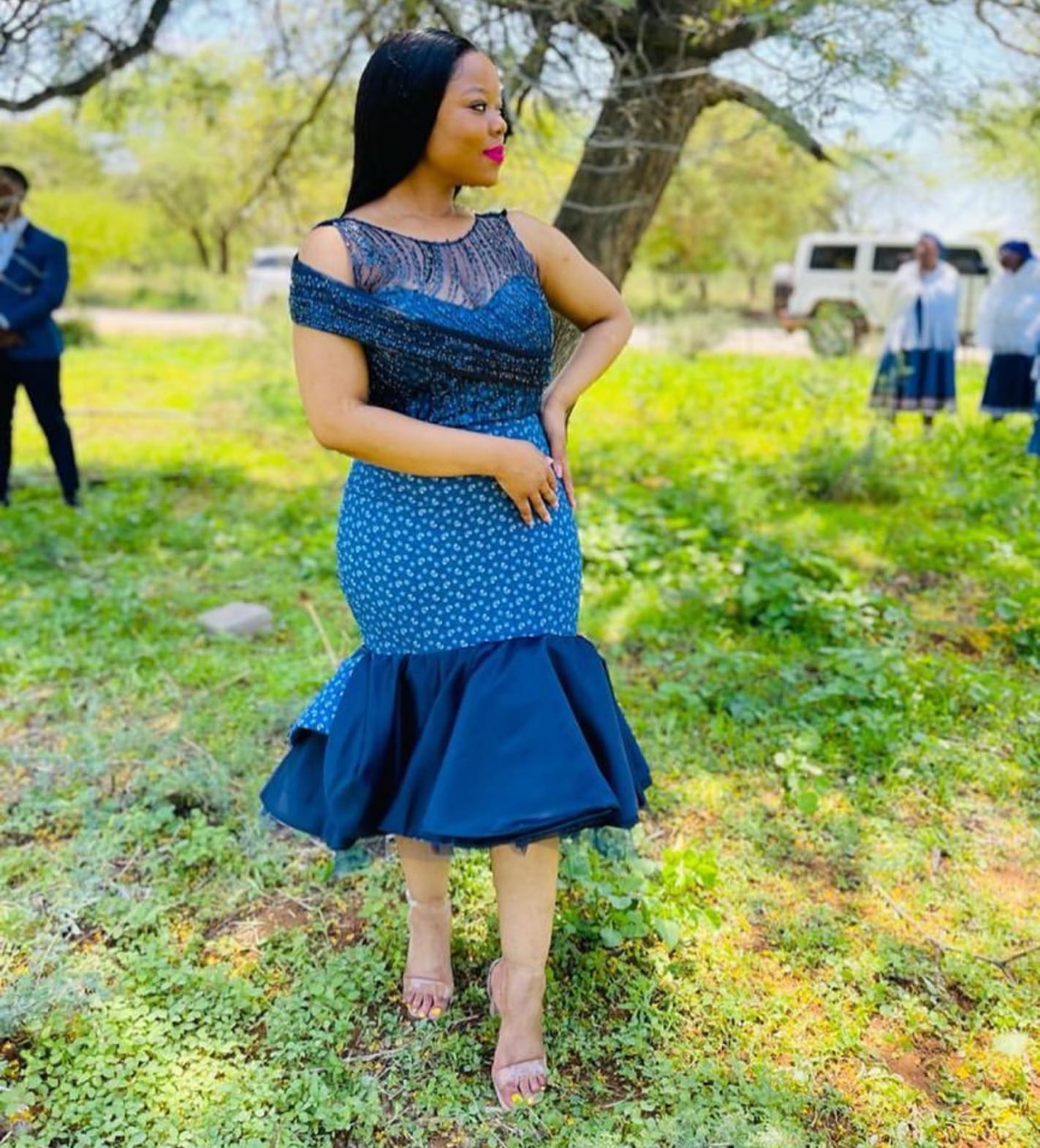

Intricate beadwork and other adornments
One of the most striking aspects of traditional Tswana attire is the intricate beadwork and other adornments that accompany the outfits. Tswana women often embellish their dresses with handcrafted beadwork, which is meticulously sewn onto the fabric to create stunning patterns and motifs. These beadwork designs vary in complexity and significance, often symbolizing social status, marital status, or specific cultural meanings.
The Tswana traditional dress is not just a fashion statement, but a way for women to express their cultural identity and heritage. It serves as a reminder of the deep-rooted traditions and values that have been passed down through generations. Today, Tswana women proudly wear their traditional clothing during cultural celebrations, weddings, and other significant events, showcasing the beauty and richness of the Tswana culture.
Festive and Special Occasion Attire
For the Tswana people of Southern Africa, traditional dress plays an important role in their cultural heritage. It is a manifestation of their identity and a way to celebrate significant milestones and events.
Highlighting traditional Tswana dress for significant celebrations and ceremonies
Tswana traditional dress is known for its vibrant colors, intricate patterns, and exquisite beadwork. It is a visual representation of the Tswana culture, showcasing their rich heritage and history. During festive occasions such as weddings, initiation ceremonies, and other important events, Tswana men and women adorn themselves with these traditional garments to honor their customs and traditions.
Weddings, initiation ceremonies, and other important events
Traditional Tswana wedding attire is characterized by the use of bright colors, including shades of red, blue, yellow, and green. Women often wear colorful skirts, called “tšhaba,” adorned with beadwork and accessorized with beaded necklaces and bracelets. Men traditionally wear a leather skirt known as “thibo” or pants with a matching shirt or tunic.
Initiation ceremonies are another occasion where Tswana traditional dress takes center stage. Young men and women participate in coming-of-age rituals, and their attire reflects their transition into adulthood. The dress for these ceremonies typically includes traditional skirts, blankets, and headwear, often made from animal skins or fabric adorned with traditional patterns and beadwork.
By preserving and celebrating their traditional dress, the Tswana people not only honor their cultural heritage but also ensure that future generations can embrace and appreciate their rich history. The Tswana traditional dress is not just clothing; it is a symbol of identity, unity, and pride for the Tswana people.
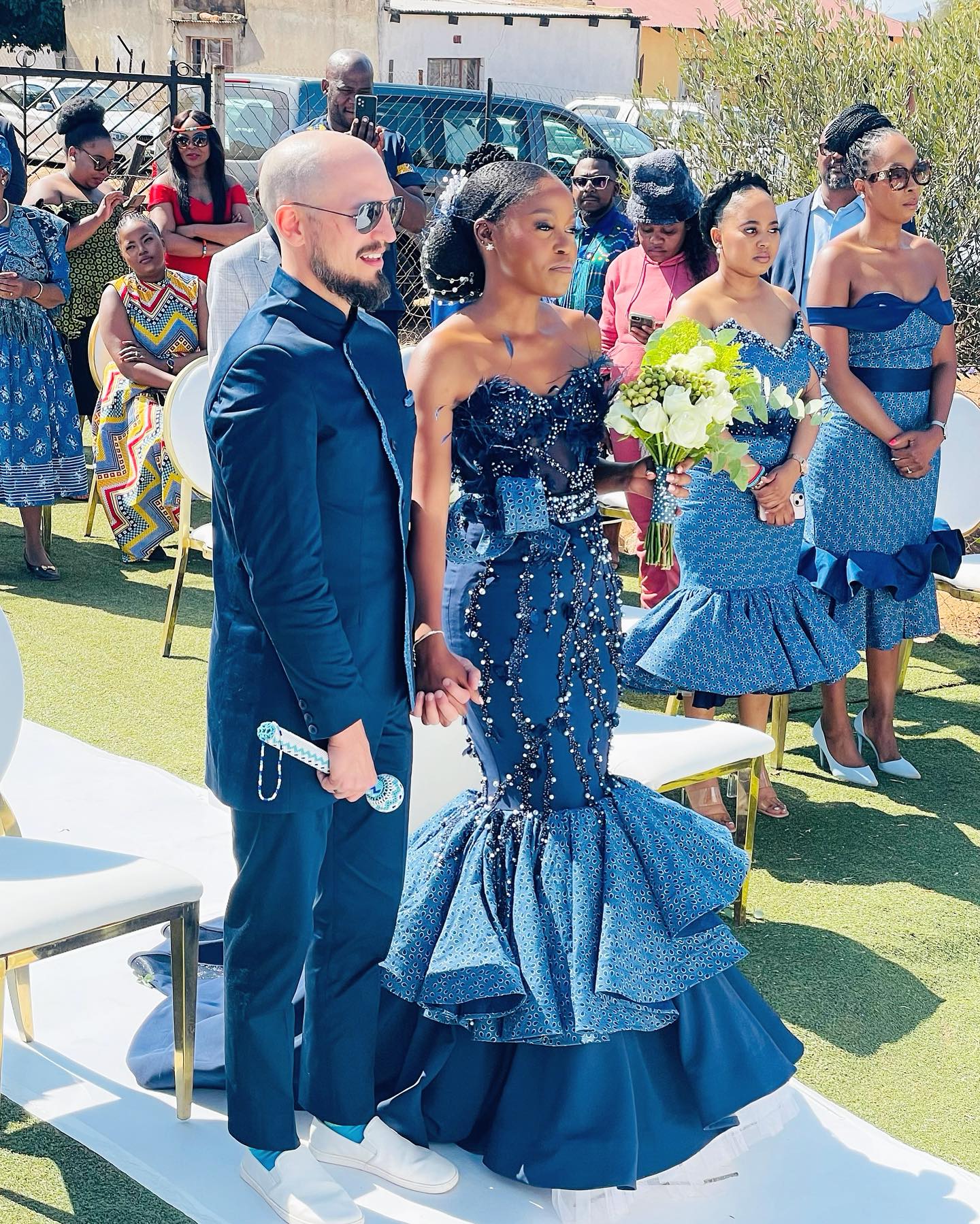

Modern Interpretations and Adaptations
Contemporary Tswana fashion incorporating traditional elements
The Tswana people of Southern Africa have a rich cultural heritage, including a distinctive style of traditional dress. While the traditional attire has remained an integral part of Tswana culture, modern interpretations and adaptations have emerged that incorporate traditional elements into contemporary fashion.
Today, you can find Tswana-inspired designs on runways, in fashion magazines, and even in everyday streetwear. Designers are blending traditional Tswana patterns, colors, and fabrics with modern cuts and silhouettes to create stunning and unique pieces that celebrate Tswana heritage.
These modern adaptations of Tswana traditional dress not only showcase the beauty and uniqueness of the culture but also provide opportunities for Tswana fashion to thrive in a global context. They allow for creative expression and promote cultural diversity, fostering a sense of pride and appreciation among the Tswana people and beyond.
If you’re interested in exploring Tswana fashion, consider looking for garments that feature traditional Tswana symbols and motifs, such as the letole (a circular crown worn by married women) or the mo ilele (a beaded neckpiece). These traditional elements can be incorporated into contemporary clothing, accessories, or even home decor, allowing you to embrace the Tswana culture in your own unique way.
With modern interpretations and adaptations, Tswana traditional dress continues to evolve, adapting to the changing times while preserving its cultural significance. It serves as a reminder of the rich heritage and traditions of the Tswana people, contributing to the vibrant tapestry of global fashion.





